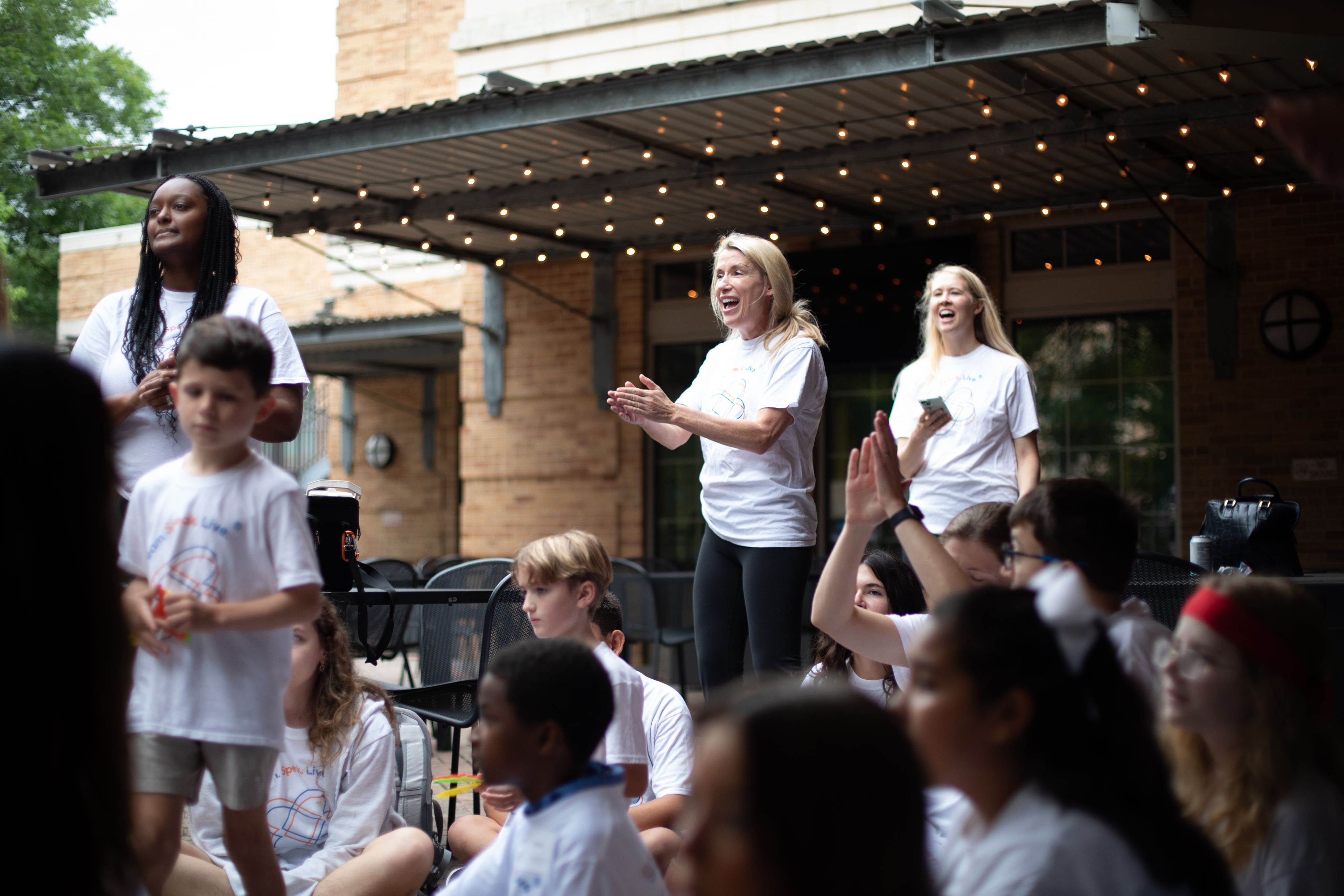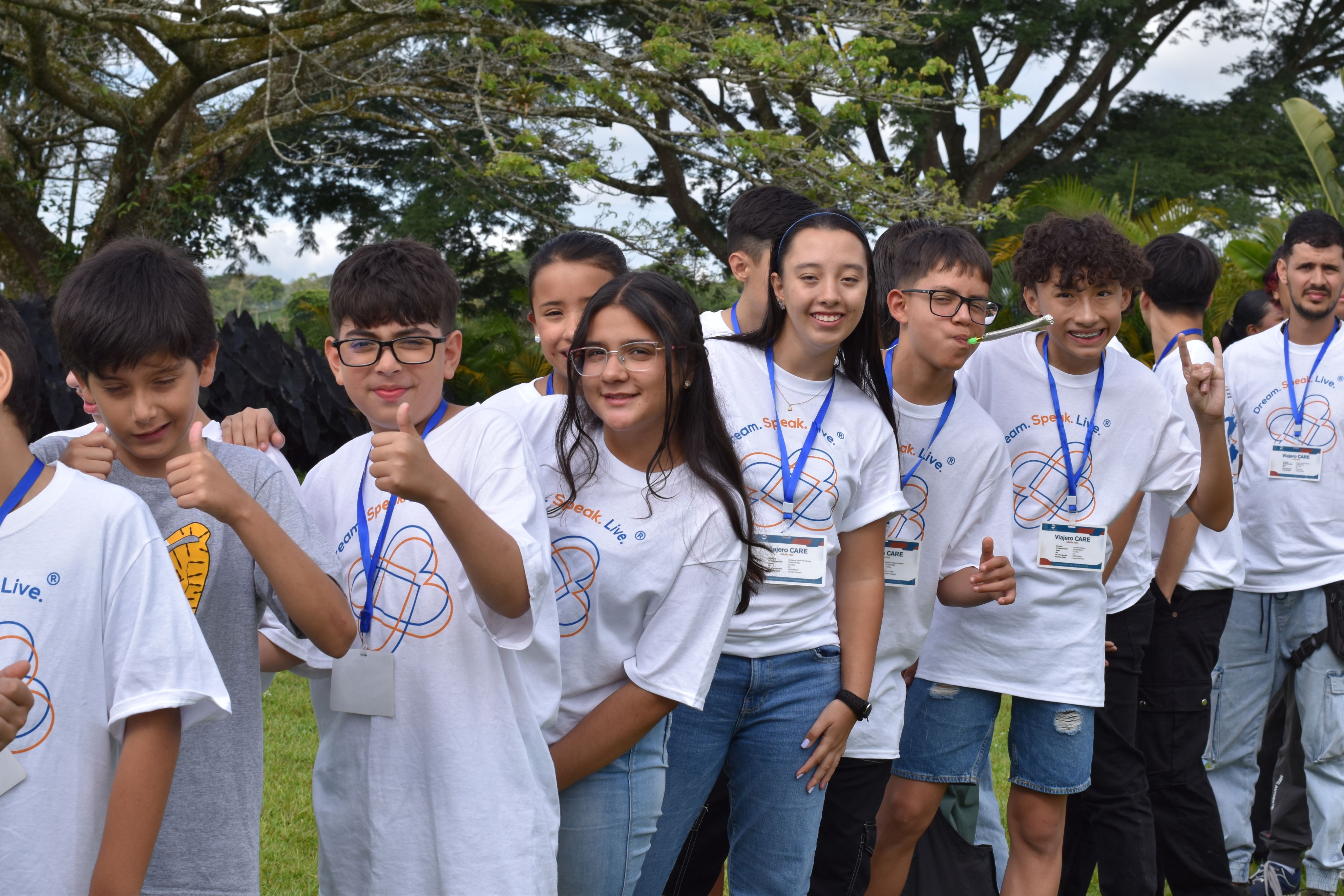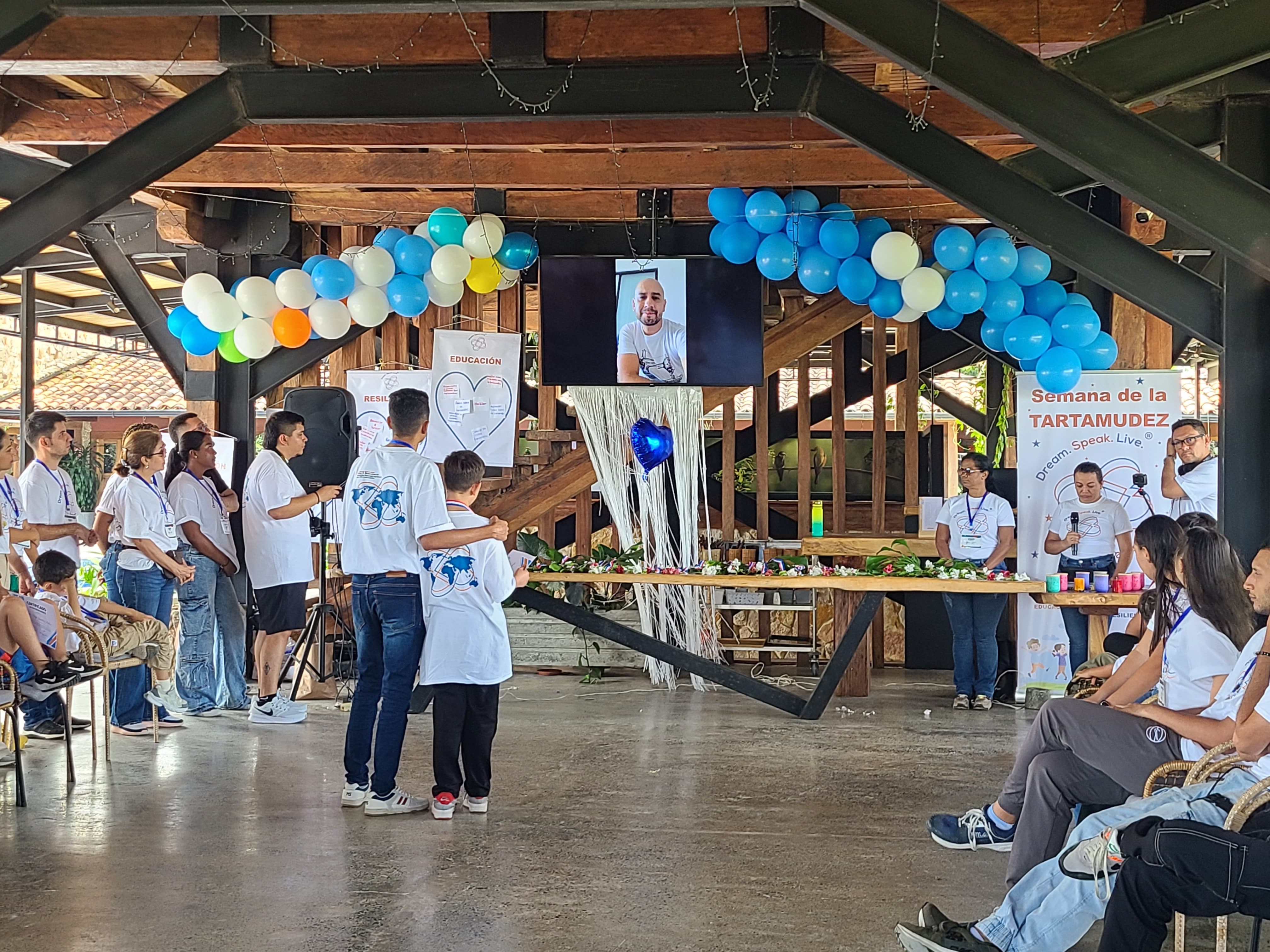Voices heard around the world
Voices heard around the world
The impact of the Arthur M. Blank Center for Stuttering Education and Research is felt across continents
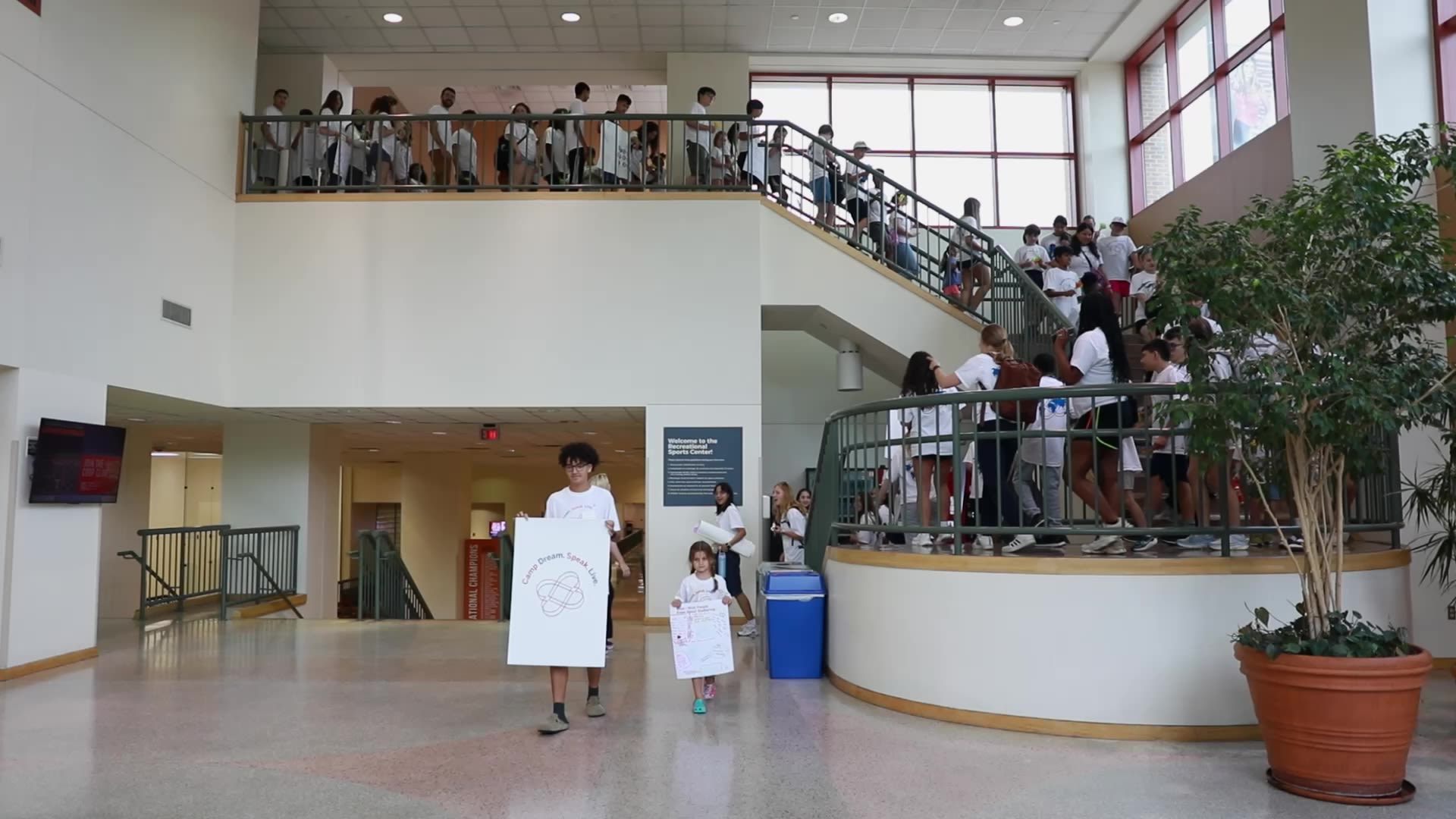
To the beat of drums, kids of all ages walk across The University of Texas at Austin campus shouting, “Dream! Speak! Live!” Never losing steam, the parade of Camp Dream. Speak. Live. participants make their way to a campus café where one by one, campers step up to the microphone and confidently, with pride, tell the crowd who they are, that they are a person who stutters, along with what they wish the world knew about stuttering.
This year’s camp was particularly special as the Arthur M. Blank Center for Stuttering Education and Research is celebrating its fifth anniversary.
The Center was established in 2020 by a $20 million legacy grant from the Arthur M. Blank Family Foundation to expand the vision and work of Courtney Byrd, founder and executive director of the Center.
“What we’ve been able to accomplish through the grant from the Blank Family Foundation has extraordinary by every metric,” Byrd said. “We started out with only two people on our team, now we have over 20. More than half of them are also people who stutter. We were only serving about 100 individuals per year, and now we serve over 500, both virtually and in-person here. We have a satellite center, so we're not only located here in Austin, but we also have a brick-and-mortar center in Atlanta. And we went from serving five international countries to over 45. So, in short, it has been extraordinary in terms of our reach and our impact.”
The Blank Center’s goal is to advance understanding about the nature and effective treatment of stuttering, scale evidence-based programming to treat children, teenagers and adults worldwide, while also creating a pipeline of expert clinicians and researchers to make quality care accessible to all.
Long before the Center’s establishment, in 2003 Byrd and a handful of student volunteers set out to empower people who stutter by initiating stuttering research at UT. While traditional treatment for stuttering often focuses on fluency, Byrd and her team, informed by research and patients, pioneered a scientifically grounded, whole-person therapeutic approach called the CARE ModelTM (Communication, Advocacy, Resiliency, Education Model) that allows people of all ages, and from around the world, to grow as confident and effective communicators.
“I think the global impact of the Blank Center is reflected in how the stereotype, the stigmatization that individuals who stutter experience is quite similar around the world,” Byrd said. “And the model that we've developed has been based on the lived experiences of listening to people from almost every country that you can think of. And together, collectively, they've informed our work and we've been able to take what we have learned from them and create a treatment that's resonating worldwide.”
“Children who stutter come to this program and in a short period of time, whether we're providing it here or it's being provided independently in the countries where it's being offered worldwide, they learn how to strengthen their communication skills and let go of this expectation that to be a strong communicator, they have to speak fluently.”

Adults who stutter often report that the most difficult times of their lives was during childhood when there was a pressure for them to try to speak as fluently as everyone else. To try to protect children from the adverse consequences of that pressure, Byrd created “Camp Dream. Speak. Live.” which is an intensive dosage of the CARE Model.
“Children who stutter come to this program and in a short period of time, whether we're providing it here or it's being provided independently in the countries where it's being offered worldwide, they learn how to strengthen their communication skills and let go of this expectation that to be a strong communicator, they have to speak fluently.”
Byrd says that the camp teaches children who stutter how to advocate for themselves so that they can share about their stuttering in a way that’s not self-deprecating.
“They also learn how to navigate the adverse consequences of stuttering, how to persist through challenging communication situations, and to treat themselves with self-compassion and kindness, and they become knowledgeable about stuttering, so they are the experts and when they encounter people who are ignorant about stuttering, they're able to educate them.”
By the end of the program, the participants learn how to not let stuttering stop them from pursuing their dreams, from speaking their hearts and living their lives to the fullest.
"My child now speaks with more confidence and shares what he learned about stuttering.” Parent of Abdulrahim, Dar es Salaam, Tanzania
"Already on the first day, Zosia came back transformed — joyful and smiling. She realized that stuttering is not something bad or strange — that it is normal.” Zosia's mom, Kotowice, Poland
"It's so nice to meet so many others that stutter — it makes me feel less alone." Camp participant, Oslo, Norway
“You gave our children something truly special…an experience and a lifelong gift they won’t find anywhere else.” Eliyah Nagar, parent, Kibbutz Ga'ash, Israel
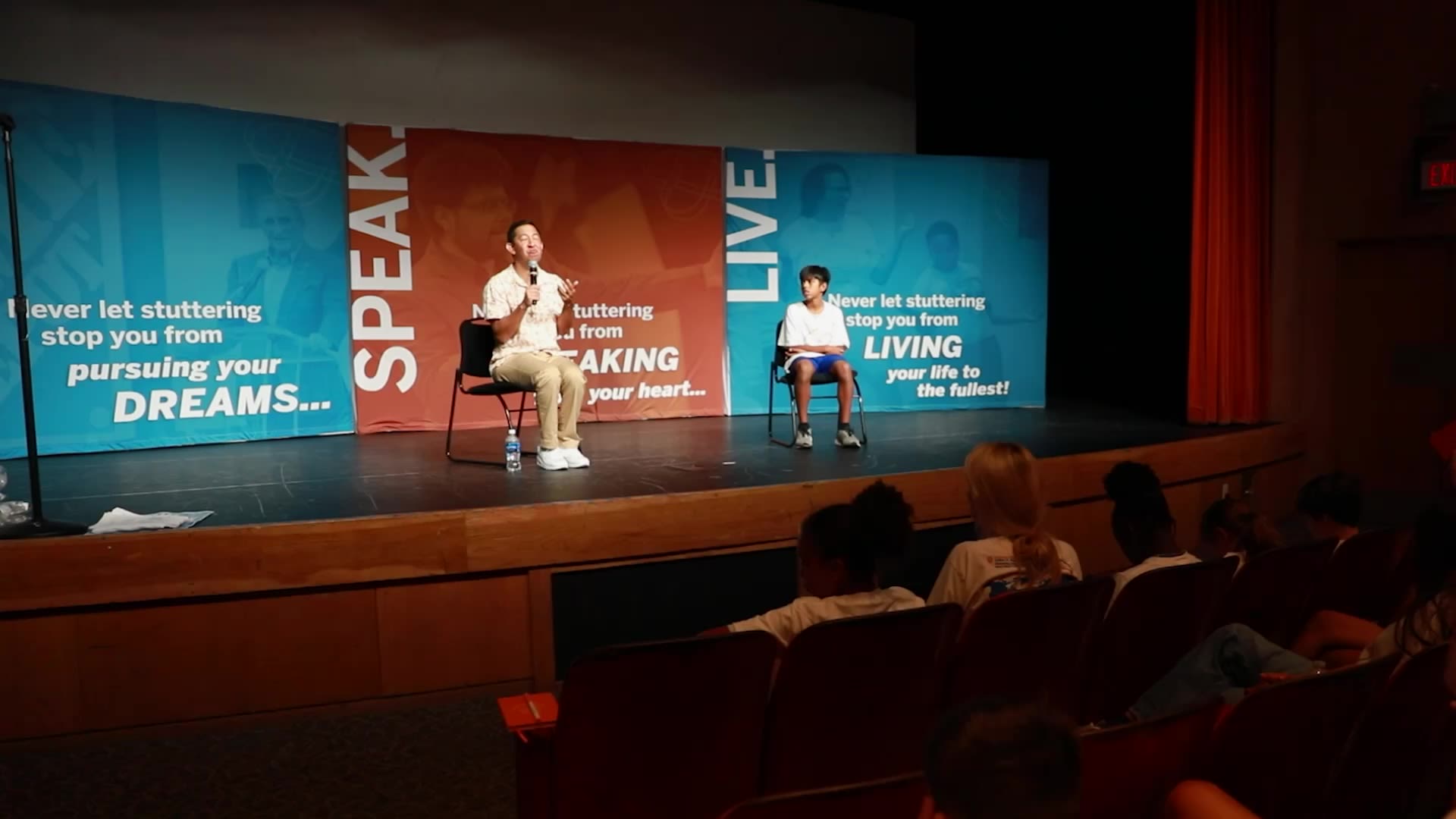
Because it’s a neurophysiological difference, stuttering is universal and present in every culture, language and location. Today, over 45 countries host Camp Dream. Speak. Live annually, from Tanzania, to Slovakia, to Pakistan. Belgium was the first international host.
“It’s such a humbling experience because it reminds you that no matter where you live in the world, you have a desire to connect,” Byrd said. “You want to be able to communicate whatever it is inside of your heart and mind, especially with those who you love, and you want to be able to pursue whatever it is you hope to be able to do within your life, but being able to speak and not be worried about what people think about you if you stutter is key to that.”
The program began growing internationally after Byrd spoke about it at a symposium. A Belgian researcher, Dr. Kurt Eggers, wanted to implement Camp Dream. Speak. Live. in his country and from that point on, other countries soon jumped on board.
“It’s an evidence-based research program,” Byrd said. “We included the word “camp” in the name to make it more inviting to children, but it's a manualized protocol. The data that we've collected and demonstrated here in terms of impact has been replicated in highly diverse countries like South Korea, Israel, Poland. To me, that independent replication across diverse cultures reflects that the distinct nature of the approach is life-changing regardless as to who is providing it or where it is being offered.”
Byrd continued by saying that the implementation of this intensive dosage of CARE through the provision of Camp Dream. Speak. Live. offers a direct observation of the impact for the researchers and professionals in countries that have offered it and says that many have gone on to then implement the CARE Model into their school districts, their universities and beyond.
Camp Dream. Speak. Live. Malaysia
Camp Dream. Speak. Live. Malaysia
Daniela Rodriguez-Orozco was just a freshman at UT when she began working with Byrd to bring Camp Dream. Speak. Live. to her family’s home country in Colombia. As a Speech, Language, and Hearing Sciences major, focusing on speech pathology, Rodriguez-Orozco first heard Byrd speak during a student organization meeting.
“She was leaving and I chased her out,” Rodriguez-Orozco said. “She’s a very busy woman but I literally ran out after her and asked her if it was possible to establish Camp Dream. Speak. Live. for people living in Colombia.”
Rodriguez-Orozco said she knew some speech therapists there and knew that the CARE Model would be new to the country.
“She was talking about bringing it to all these other countries and I thought, ‘Why can't Colombia be the next one?’”
Rodriguez-Orozco spent the next three years of her undergraduate career at UT working on getting the camp to Colombian families. She said she did a little bit of everything, from research to translating emails between Byrd and professionals in Colombia and other materials related to replication of the model. Finally, in the summer of 2025, following her undergraduate graduation, the inaugural offering in Colombia was held. She says seeing the camp take place was surreal and is, above all, grateful that Byrd and the Blank Center team took the idea she had as a young student seriously.
Daniela Rodriguez-Orozco at Camp Dream. Speak. Live. Colombia. Photo by Esteban Barrera
Daniela Rodriguez-Orozco at Camp Dream. Speak. Live. Colombia. Photo by Esteban Barrera
“I had the opportunity to actually go,” Rodriguez-Orozco said. “It was the best feeling in the world. Everyone there, the people, the children, the families, the people running it were all crying because it was life changing. I was also crying! It was incredible.”
She says that her favorite part of seeing the Colombian camp in action was watching videos the families had made for their camp participants on the last day.
“The kids went up, they got their little certificate, their little medal, which to a kid, a medal is incredible,” Rodiguez-Orozco said. “They were all biting the medals like Olympians! The kids were congratulated, they took a photo and then turned around and there was a TV — it was the family saying something like, ‘Son, we love you, the way you speak is incredible.’ They were so happy to have seen that, during just a week, their kids had gained such confidence.”
A documentary was made by Telepacifico about the Colombia Dream. Speak. Live. camp that will ideally be replayed for years to come.
Rodriguez-Orozco recently received a scholarship from the Blank Center to continue her graduate education with the Center this fall. Byrd says that it’s these types of efforts that truly exemplify the meaning of “What starts here changes the world” and that it is the best gift of her career to be able to support students like Daniela.
Participants at Camp Dream. Speak. Live. Colombia. Photo by Esteban Barrera
Participants at Camp Dream. Speak. Live. Colombia. Photo by Esteban Barrera
Participants at Camp Dream. Speak. Live. Colombia. Photo by Esteban Barrera
Participants at Camp Dream. Speak. Live. Colombia. Photo by Esteban Barrera
Participants at Camp Dream. Speak. Live. Colombia watch videos sent to them by family on the last day of camp. Photo by Esteban Barrera
Participants at Camp Dream. Speak. Live. Colombia watch videos sent to them by family on the last day of camp. Photo by Esteban Barrera
Byrd's hopes for the future of the Center will also, certainly, change the world.
“In the next five years, I hope that every school district across the United States is implementing the CARE Model,” Byrd said, adding that she hopes they can double the number of countries where the CARE Model is practiced and Camp Dream. Speak. Live. is held. “I think there's a lot of opportunity for us to build up these children at a very young age. I would like to get more CARE champions so that they're able to provide the training to the next generation. It’s having a multiplying effect across not just the countries that we're in now, but the other countries that we expand to, too.”
More than anything, Byrd hopes to help shift mindsets about stuttering.
“Ultimately, I hope that when you think of stuttering, you don't think of what people can't do, rather you think of what they can do. Because I think that's the first thought right now and that thought has been conditioned into the minds of many individuals around the world limiting what they think that they can do. But if we can change that, we definitively will change the world. I hope we can be part of that.”
"Ultimately, I hope that when you think of stuttering, you don't think of what people can't do, rather you think of what they can do. Because I think that's the first thought right now and that thought has been conditioned into the minds of many individuals around the world limiting what they think that they can do. But if we can change that, we definitively will change the world. I hope we can be part of that."
